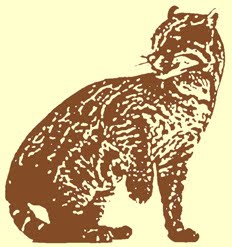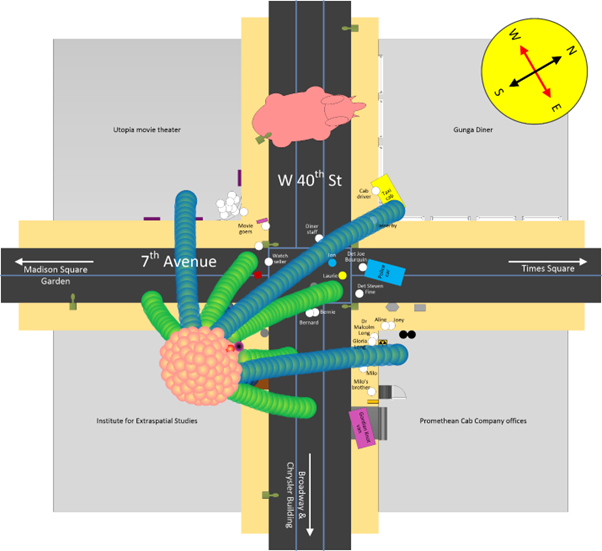This article first appeared in Journey Planet #77, December 2023.
Squadron Supreme was a 12-issue Marvel limited series that came out in 1985-1986, predating Watchmen by about a year. Written by Mark Gruenwald and (toward the end of its run) drawn by Paul Ryan, it had none of Alan Moore's multi-layered storytelling nor Dave Gibbons' beautifully clean draughtsmanship. But coincidentally, it did ask a few of the same questions, like: Is it safe to hang around superhumans who are in effect walking nuclear reactors? When superhumans fight in most comics, how come nobody gets seriously injured or even dies? What if superheroes really affected the world and how society works? And what if some of them decided that leaving ordinary human governments to run the planet just wasn't working out?
The Squadron's origins begin back in Avengers #85 in 1971, as both an alternate-Earth version of the villainous Squadron Sinister and as a pastiche of DC's flagship Justice League of America, with alien powerhouse Hyperion modelled on Superman, caped crimefighter Nighthawk on Batman, Doctor Spectrum on Green Lantern and so on. As they sporadically guested in various Marvel titles, more Squadron members would be added to parallel the JLA's evolving line-up. Thus we had Arcanna for Zatanna, Nuke for Firestorm and so forth. Prior to the limited series, the Squadron's Earth (or at least the USA: like many American comics at the time they rarely made a distinction) had been devastated by an alien super-intelligence (Defenders #112-114), leaving society in a very sorry state.
In an ongoing 'Marvel Earth' comic (stories set on the world shared by Spider-Man, the Avengers, the X-Men etc), that sort of devastation would have been handwaved by the start of the next storyline; perhaps an opening page or two showing the heroes clearing up rubble and reporting that the President is back in charge, and then onto the next plot. But given that Squadron Supreme is set on an alternate Earth, writer Gruenwald had the opportunity to pretty much do what he wanted with the planet and its greatest heroes over the next twelve issues. And that's just what he does, examining the questions I posed earlier as the Squadron looks at the world with its war, crime, disease and death, and decides to use their great powers and resources to make actual, world-changing differences by instituting their so-called 'Utopia Program'.
Assuming control of the United States, they outlaw guns, get to work on a cure for cancer, establish behavioural modification on criminals and introduce cryogenic 'hibernaculum' chambers for people with incurable conditions. At first, the Utopia Program is a success, even if some of the Squadron's members don’t seem to be fully on board with the 'benevolent dictatorship' approach that they have imposed on society. Things go bad when one of the team uses the behaviour modification device to 'fix' the attitude of his romantic partner after a disagreement, turning her into a clingy, lovelorn puppy. Another discovers that his nuclear powers have had life-changing effects on his close family (mirroring the later Dr Manhattan plot in Watchmen), while others quit the team in disillusionment and disgust.
Things come to a head in the final issue when former teammate Nighthawk and his Redeemers (a scratch band of renegade heroes, untried newbies and desperate villains) confront the Squadron, demanding that they step down and dismantle the quasi-fascistic 'utopia'. A calm and civilised discussion does not ensue. Instead the most lethal super-team battle in the history of comics to date takes place in what is effectively a model for the famous 'airport fight' in the movie Captain America: Civil War. Hearts are stopped, heads are caved in, backs are broken and chests are impaled. By the end of the issue, seven major characters are dead and the dream of a utopian society has died with them. It's a brutal and brilliantly tragic finale to the series.
Squadron Supreme gets a follow-up shortly after in the shiny graphic novel Squadron Supreme: Death of a Universe, in which the survivors of both teams must work together to hastily combat a spatial anomaly which threatens to engulf the sun itself. The body count rises again, with some heroes failing to even survive the launch of their space rocket, while another fatally underestimates the simple physics of retarding the growth of a sun-sized entity (the subsequent purple smear effect is quite disturbing). Oh, and somebody's head explodes. The Squadron survives, after a fashion, and goes on to guest star in mainstream 'Marvel Earth' comics, but they never reach the high and lows of the Gruenwald/Ryan era.
A curious epilogue to this tale is that when Mark Gruenwald died unexpectedly young from a heart attack (like one of the main characters in Squadron Supreme) in 1996, his will mandated that he be cremated and his ashes mixed in with the ink of the book he was most proud of. It was the trade paperback collection of Squadron Supreme #1-12. You could say that he loved comics so much that he wanted to be part of them forever.
Suggested Reading
Squadron Supreme Volume 1 #1-12 or trade paperback Squadron Supreme. The follow-up graphic novel Squadron Supreme: Death of a Universe.





